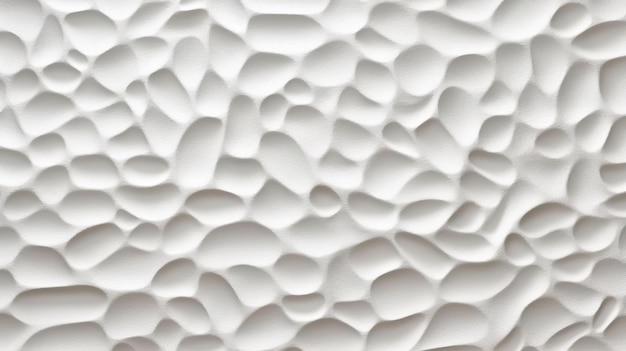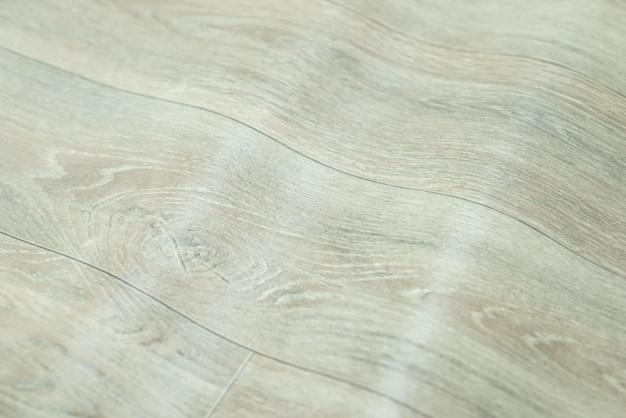If you have vinyl flooring in your home or office, you may have encountered the frustrating issue of waves or ripples appearing on the surface. These waves not only affect the overall aesthetics of your space but also pose a potential tripping hazard. But don’t worry, in this blog post, we will explore the causes behind these waves in vinyl flooring and provide you with effective solutions to get rid of them.
Vinyl flooring has gained popularity over the years due to its durability, water-resistance, and low maintenance. However, despite its many benefits, vinyl flooring can sometimes develop waves or ripples, which can be unsightly and troublesome. In this blog post, we will delve into the reasons behind this issue and equip you with practical tips and tricks to eliminate these waves and restore the smoothness of your vinyl flooring. So, let’s dive in and discover how to get waves out of vinyl flooring for a seamless and beautiful look in your space!
How to Smooth Out Those Pesky Vinyl Flooring Waves
Vinyl flooring is a popular choice for many homeowners due to its affordability, durability, and easy maintenance. But let’s be honest, those waves that sometimes appear in vinyl flooring can be quite annoying. Don’t worry, though – we’ve got you covered! In this guide, we’ll show you exactly how to smooth out those pesky vinyl flooring waves and get your floors looking flawless.
Assess the Situation: It’s Wave Time! 🌊
First things first – take a moment to assess the situation. Are the waves in your vinyl flooring minor or major? Are they scattered or concentrated in certain areas? This initial evaluation will help determine the appropriate course of action to get your floors back to their rightful, waveless state.
Get Your Tools Ready: Time to Tackle Those Waves 💪
Before we dive into the process, let’s make sure you have all the tools you’ll need. Grab a heat gun or hairdryer, a clean and damp cloth, a heavy object (like a stack of books), and a bit of patience. Now, let’s get started on this wave-smoothing adventure!
Apply Some Heat: Say Goodbye to the Waves 🔥
Now, it’s time to unleash the power of heat. Use your heat gun or hairdryer on the lowest setting and gently heat up the area where the waves are present. Be careful not to overheat the vinyl flooring as it could cause damage. Once the area is warmed up, use your damp cloth to press the vinyl down firmly. By applying heat and pressure, you’ll help the vinyl regain its flat and wave-free glory.
Weigh It Down: Flex those Muscles 💪
Now that you’ve ironed out the waves, it’s time to keep the vinyl in place while it cools down and sets back into its original shape. Grab your stack of books (or any heavy object) and place it on top of the smoothed-out area. This will help ensure that the vinyl stays flat and wave-free during the cooling process.
Let It Cool: Patience Is a Virtue ⏳
Okay, we know it’s tempting to check if the waves have magically disappeared, but be patient! Give the vinyl flooring some time to cool down and set properly. This could take anywhere from a few hours to a full day, depending on the size of the area. While you wait, resist the urge to walk on the weighted-down area, as this could disrupt the cooling process.
Check Your Progress: The Wave Chronicles 📜
Once the vinyl flooring has cooled down completely, it’s time to unveil the results. Remove the weights and take a close look at the previously wavy area. In most cases, the waves should be significantly reduced or completely gone. Hooray! If there are still some stubborn waves lingering, you can repeat the heating and pressing process until your vinyl is as smooth as a baby’s bottom.
Maintain with Care: Keep Those Waves at Bay 🌊
Prevention is key to maintaining wave-free vinyl flooring in the future. Be mindful of heavy furniture or appliances that you place on the floor, as these can cause waves over time. Additionally, avoid excessive exposure to direct sunlight, as it can cause the vinyl to expand and contract, leading to waves. Finally, make sure to clean and care for your vinyl flooring regularly to keep it in tip-top shape for years to come.
Now that you’re armed with the knowledge of how to banish those vinyl flooring waves, it’s time to get to work! Follow these steps, be patient, and soon you’ll be enjoying smooth, wave-free floors that will impress everyone who enters your home. Happy vinyl flooring wave-smoothing!
Note: Keep in mind that excessive heat or improper techniques may cause damage to your vinyl flooring. Proceed with caution and consult a professional if you have concerns about tackling particularly stubborn waves or if you’re unsure about the process. Better safe than sorry! 💪
FAQ: How To Get Waves Out Of Vinyl Flooring
Do I have to remove the old vinyl flooring before installing new vinyl flooring
No, you don’t need to remove the old vinyl flooring before installing the new one. However, it’s essential to make sure the existing flooring is clean, smooth, and free from any dirt or debris before laying the new vinyl. If the old vinyl is damaged or uneven, it’s recommended to remove it for a more even and polished finish.
Can vinyl flooring soak up water
Contrary to popular belief, vinyl flooring is actually waterproof! It’s designed to withstand occasional spills and splashes without absorbing water or warping. So go ahead, dance like no one’s watching, and don’t worry about those accidental water balloon fights in the living room.
What happens if water gets under vinyl plank flooring
Ah, the dreaded case of water making its way under your vinyl plank flooring. While vinyl is waterproof, the same can’t be said for the floor underneath. If water manages to seep in, it can cause damage to the subfloor and even create a breeding ground for mold. So it’s essential to address any water intrusion promptly to prevent any unwanted surprises.
Why does my vinyl floor look wavy
If your vinyl floor is looking wavy, it might be due to improper installation or uneven subflooring. When the subfloor isn’t level or contains imperfections, it can cause the vinyl to appear wavy or bumpy. So, you’re not hallucinating—your floor isn’t participating in a secret wave contest.
How do I get water out of vinyl plank flooring
Do you have a wet mess on your hands? Fear not! To remove water from vinyl plank flooring, start by wiping up any excess moisture with a dry cloth or mop. Then, let the floor air dry naturally to ensure all the water evaporates. If you notice any lingering dampness or suspect water has seeped beneath the planks, it’s best to consult a professional for proper inspection and repair.
What causes ripples in vinyl flooring
Oh no, you’ve got ripples in your vinyl flooring! This can happen due to various factors, such as poor installation or underlying moisture issues. When the vinyl isn’t properly secured or the subfloor is damp, waves and ripples can appear. It’s like a mini roller coaster ride, but one you definitely didn’t sign up for.
How do I fix bubbles in vinyl flooring
Well, well, well, looks like you’ve got some bubble trouble. To fix bubbles in vinyl flooring, you’ll need to make a small incision in the bubble using a sharp knife. Then, apply adhesive carefully under the vinyl and press it down firmly. If it’s a stubborn bubble that won’t quit, seek professional help to ensure your floor returns to its smooth glory.
Will bubbles in vinyl flooring go away on their own
Unfortunately, bubbles in vinyl flooring won’t magically disappear like your missing socks. If you’re dealing with bubbles, it’s best to address them promptly to prevent further damage and potential tripping hazards. So roll up those sleeves and bid farewell to those unwanted vinyl bubbles.
Do I need anything under vinyl sheet flooring
Well, well, just like a secret agent, vinyl sheet flooring likes having a little secret accomplice too. If you’re installing vinyl sheet flooring, it’s recommended to use an underlayment. This underlayment not only provides extra cushioning but also helps to enhance the durability and stability of your flooring. So let the vinyl sheet have its secret sauce for the smoothest results.
Can I lay vinyl on floorboards
Absolutely! Vinyl flooring isn’t picky about where it lays its stylish ground. Whether you have concrete slabs, floorboards, or any other stable subfloor, vinyl will happily strut its stuff. Just ensure the surface is clean, level, and free from any protrusions or imperfections. Vinyl doesn’t discriminate; it embraces diversity!
Why does my floor feel wavy
If your floor has turned into a secret dance studio, feeling wavy and uneven, it could be due to an uneven subfloor. When the foundation beneath your flooring isn’t level, it can create those undulating waves that leave you feeling like you’re walking on a trampoline. Bring in the experts to level the playing field for a smooth and stable surface.
How do I fix a swollen laminate floor without replacing it
Oh no, your laminate floor decided to play “Inflate-a-Floor”! Swelling can occur when moisture seeps into the laminate planks, causing them to expand. If only we had magic spells to deflate them, but fear not! In some cases, the swollen planks can be carefully removed, dried, and reinstalled. However, for severe cases, replacement might be the best solution. So make sure to keep any water adventures away from your laminate floor.
How do I remove luxury vinyl plank flooring
So you’ve decided to give your luxury vinyl plank flooring a new look or upgrade. To remove it, start by cutting the planks into manageable sections with a utility knife or flooring cutter. Then, carefully pry up the sections using a crowbar or a floor scraper. Take your time, be patient, and bid adieu to your old flooring with a bittersweet farewell.
Can I pull up vinyl plank flooring and reuse it
Well, well, recycling enthusiast, the answer is a bit tricky. While it’s theoretically possible to remove vinyl plank flooring and reuse it, it’s not always practical or recommended. The process of removing and salvaging the planks often results in damage, making them less attractive or unstable for future use. So, it’s a true dilemma for the eco-warrior within.
How do I get ripples out of vinyl flooring
Ah, ripples in your vinyl flooring—those mischievous little waves. To remove them, start by gently heating the affected area with a hairdryer to soften the vinyl. Once it becomes pliable, press down firmly with a heavy object (like a stack of books) until the ripples flatten out. If your DIY attempts don’t do the trick, call in the cavalry (aka flooring professionals) to restore your floor’s smooth jazz vibe.
How do I remove vinyl plank flooring without damaging it
Removing vinyl plank flooring without leaving a trail of destruction behind requires some finesse. Start by using a heat gun or hairdryer to warm the adhesive beneath the plank. Then, carefully lift the plank using a putty knife or scraper, applying gentle pressure. If you’re lucky and your planks cooperate, you can salvage them for future projects or gift them to a friend in need of stylish flooring.
We hope this FAQ section helped unravel the mysteries of vinyl flooring waves and answered your burning questions. Remember, when it comes to flooring, it’s always best to address issues promptly and seek professional help when needed. Happy flooring adventures, and may your vinyl be forever wave-free!

